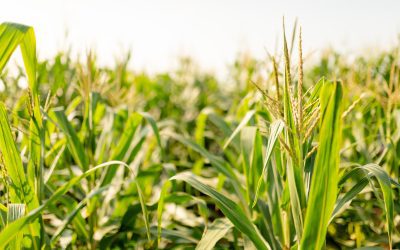$38 billion for ag conservation and more in Inflation Reduction Act of 2022
Posted: November 2, 2022
Category:
ICGA, Indiana Corn and Soybean Post - Fall 2022, ISA, News
As the 2023 harvest season rapidly approaches, ASA and soy advocates continue to work with Congress and the Administration to ensure that soy and agricultural policies are at the top of everyone’s legislative agenda.
President Biden signed the Inflation Reduction Act of 2022 (H.R. 5376) into law Aug. 16, following its passage through the U.S. House Representatives with a vote of 220-207. This reconciliation package includes a subset of nearly $38 billion funding for agricultural conservation, credit, renewable energy and forestry through FY2031.
Throughout the over yearlong development of this partisan package, ASA remained neutral on the overall package but voiced support for specific provisions (such as biofuels investments, which were included) and voiced opposition to specific proposals (such as changes to stepped up basis and other farm tax provisions, which were not included).
The package includes $19.5 billion for agricultural conservation. It adds more than $18 billion in additional funding for existing farm bill conservation programs, including the Environmental Quality Incentives Program ($8.45 billion), Regional Conservation Partnership Program ($4.95 billion), Conservation Stewardship Program ($3.25 billion), and Agricultural Conservation Easement Program ($1.40 billion).

Transportation and infrastructure
The Freight Rail Shipping Fair Market Act (FRSFMA) was introduced to the U.S. House of Representative on Aug. 2. This legislation, while in response to rail service delivery issues over the past six months, would bring the Surface Transportation Bord back into a current authorization and provide the board with adequate funding to operate.

The current Surface Transportation Board authorization expired two years ago.
Important provisions in the bill supported by ASA and other members of the Agricultural Transportation Working Group include: an increase in the authorized appropriations levels to $255.75 million during five years for the STB workload; creating guardrails that would result in service delivery standards and remedies being included in rail contracts without dictating specific terms; providing a level of fairness currently lacking in the freight rail system by allowing shippers – not just rail carriers – to charge demurrage to ensure both sides of the transaction are incentivized to perform; and updating the definition of common carrier obligation to establish minimum rail service standards.
These updates are desperately needed to enable industries like agriculture to receive reliable and dependable rail service to help drive the economy forward.
House lawmakers are spending the next two months negotiating across the aisle in an effort to reach a bipartisan agreement on the draft legislation. ASA is communicating its priorities regarding this legislation to soy state members of Congress who sit on the Transportation & Infrastructure Committee. The committee is tentatively scheduled to mark up this legislation in late September.
WRDA Passes Senate
In a surprise vote July 28, the U.S. Senate passed the Water Resources Development Act with a bipartisan vote of 93-1.
The legislation contains a provision that would permanently adjust the cost-share ratio for Inland Waterways Trust Fund (IWTF) projects from the current 65 percent general revenues and 35 percent IWTF to 75 percent general revenues and 25 percent. This cost-share ratio change was ASA’s top priority in the legislation.

In June, the House of Representatives passed its version of WRDA by a vote of 384-37. This bill did not include the same adjustment to the cost-share allocations for IWTF projects. The House and Senate will now begin conference negotiations to reconcile the differences between the two bills.
ASA will continue to support the Senate provision to adjust the cost-share allocation, as it will make significant progress in addressing the current backlog of construction projects along the inland waterways system. Completing this backlog of construction to resolve bottlenecks and slow-downs along the system will help alleviate supply chain issues. The strength of America’s farm economy relies on the efficiency of its inland waterways system.
ASA at the Farm Progress Show
ASA leaders and staff gathered in Boone, Iowa, earlier this month for the annual Farm Progress Show. During the show ASA President Brad Doyle, a farmer from Arkansas; ASA Vice President Daryl Cates, a farmer from Illinois, and ASA CEO Steve Censky met with industry partners and fielded media interviews on top policy issues.
Doyle and Cates sat down with House Ag Committee Ranking Member Glenn “GT” Thompson to discuss ASA’s Farm Bill 2023 priorities and more. ASA leaders also had the opportunity to chat with USDA Secretary Tom Vilsack and Reps. Mariannette Miller-Meeks and Vicky Hartzler.



